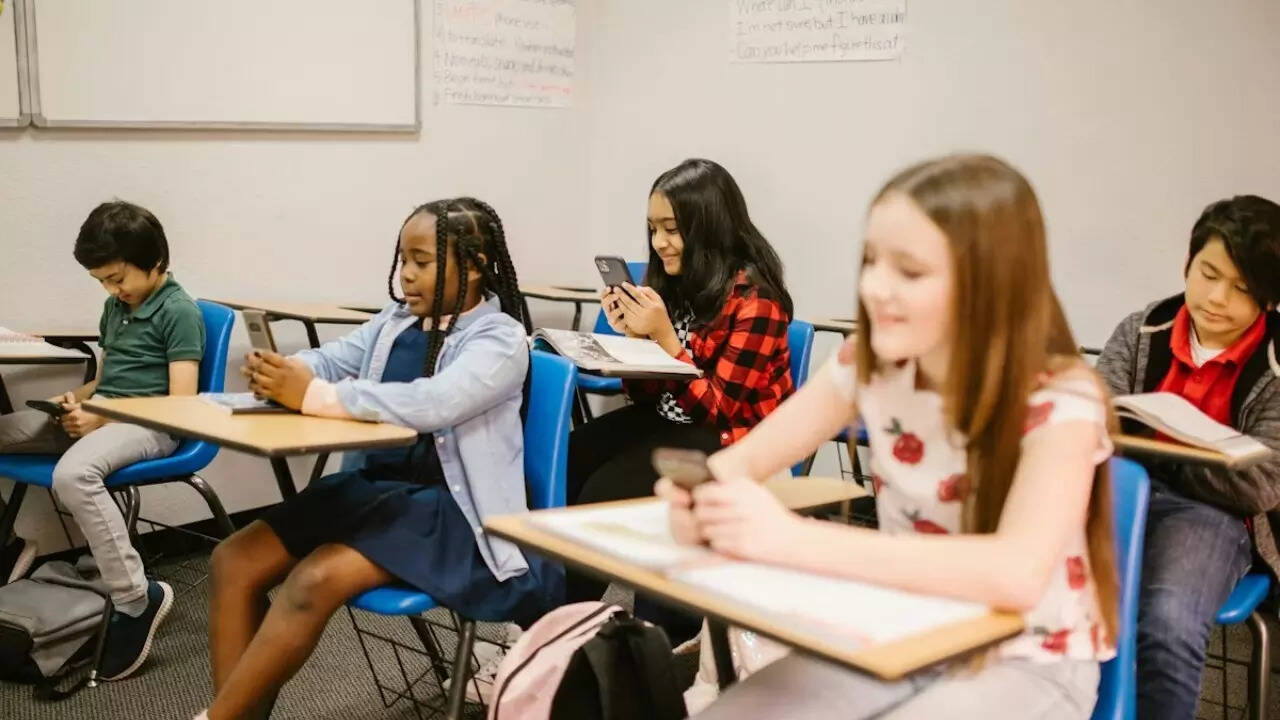ARTICLE AD BOX

With technological advancements disrupting every single sphere of our living, classrooms haven’t been an exception. Electronic gadgets that were once the means for communication have now replaced study materials on pen and paper.
Taking notes? No need for a notebook, just get hold of the tab, and sign in to some app. Along came the constant buzz of an array of notifications — the fitness app, the social media platforms, the gaming score, the this, the that. Having a gadget indeed seems like having the whole world in the length of your palm — but does that perk come with actual benefits, especially when you’re supposed to focus on one thing and not have your attention divided like apple pies?Let’s explore what a recent scientific study says.
Gadgets in the classroom: Useful tool or major distraction
In classrooms across the world, one device has quietly become a major distraction: the student’s mobile phone, or in some cases, the tablet. But what happens when those phones are taken out of the equation? According to recent research, banning cellphones at school can lead to less distraction and better learning outcomes. A recent working paper from the National Bureau of Economic Research (NBER) shows that banning cellphones in schools can lead to better test scores, fewer absences, and a more focused classroom environment.
New findings show that when students aren’t constantly checking social media, texting friends, or browsing apps, they focus more on lessons — particularly students who struggle most.

Study overview and key findings
The study titled The Impact of Cellphone Bans in Schools on Student Outcomes: Evidence from Florida by David N. Figlio and Umut Özek analyzes data from a large urban school district in Florida after a bell-to-bell cellphone ban was introduced.
When one Florida school district banned cellphones, disciplinary issues initially spiked as schools worked to enforce the new rule. But the research proved useful.The research that draws on detailed student‐level data, including pre‐ban phone-use levels by school building, underlined three major findings:In the first year, suspensions increased, particularly among Black students, as the ban was enforced and behavior adjusted. In the second year, students’ test scores showed a significant improvement, especially in schools that had high levels of phone use before the ban. Unexcused absences fell markedly, and this reduction in absenteeism appears to explain a large share of the test-score gains. The effect was most pronounced in middle and high schools, where smartphone ownership is usually higher.
‘Banning’ cellphones: Would that work?
One of the strongest arguments for banning cellphones is that they are a major distraction.
Research in educational psychology has long shown that multitasking — such as switching between a lesson and a smartphone — reduces retention, slows response times, and weakens attention.Now, in the Florida study, by reducing easy access to phones during the school day, students presumably spent more time engaged with instruction, less time distracted by messages, notifications, social media, or games. Secondly, the drop in unexcused absences suggests that the ban might have helped keep students in class or more accountable for their presence — less prone to cooking up excuses for their absence — which in turn boosts learning opportunities.
The researchers, in fact, note that attendance gains explain a “large fraction” of the improvement in test scores.

Unintended consequences that need smoothing
While the overall findings are positive, the study also highlights some important drawbacks, such as:The spike in suspensions in the first year is concerning — schools must manage enforcement carefully to avoid disproportionate discipline effects, particularly for students of color.The gains, while statistically significant, are modest at best. The research authors note that although the boost in test scores is “meaningful,” it’s “not game-changing.”Furthermore, this policy works best in contexts where phone use was high before the ban. Meanwhile, in settings where phones were already minimally used or where other factors dominate learning outcomes, the effects might be weaker — it can even backfire.
Ket takeaways: Implications for schools
For school leaders looking to adopt or refine a cellphone ban policy, this particular study offers several actionable insights:Timing and communication matter. The adjustment phase (first year) may include increased disciplinary issues; framing the change clearly and preparing staff, students, and families can ease the transition.Enforcement practices must be equitable and transparent to avoid unintended consequences, especially for vulnerable students.Complementary supports (such as alternative ways for students to collaborate, appropriate teacher training, and structured class time) help in maximizing benefits.Monitoring attendance and engagement is as important as tracking test scores. Reduced absenteeism appears to be a key mechanism for improved academic outcomes.While schools in contexts with heavy smartphone use may expect larger gains, those with minimal phone distractions may still need careful and broader behavioral or instructional reforms.
Mothers' activity level depends on number and age of children: Research

 2 hours ago
4
2 hours ago
4









 English (US) ·
English (US) ·